
Ahead of Europe’s premier yearling sale, Book 1 of Tattersalls October Yearling Sale [Oct 8-10], Steve Dennis traces the company’s rich history and speaks to its ninth chairman, Edmond Mahony
In an antique land, time out of mind, before George Washington crossed the Delaware, before James Cook saw Botany Bay, before the Earl of Derby tossed a coin to decide a name for a new race at Epsom, a man named Richard Tattersall started a new business in a part of London that was, to borrow the time-honoured and wistful observation, still all fields.
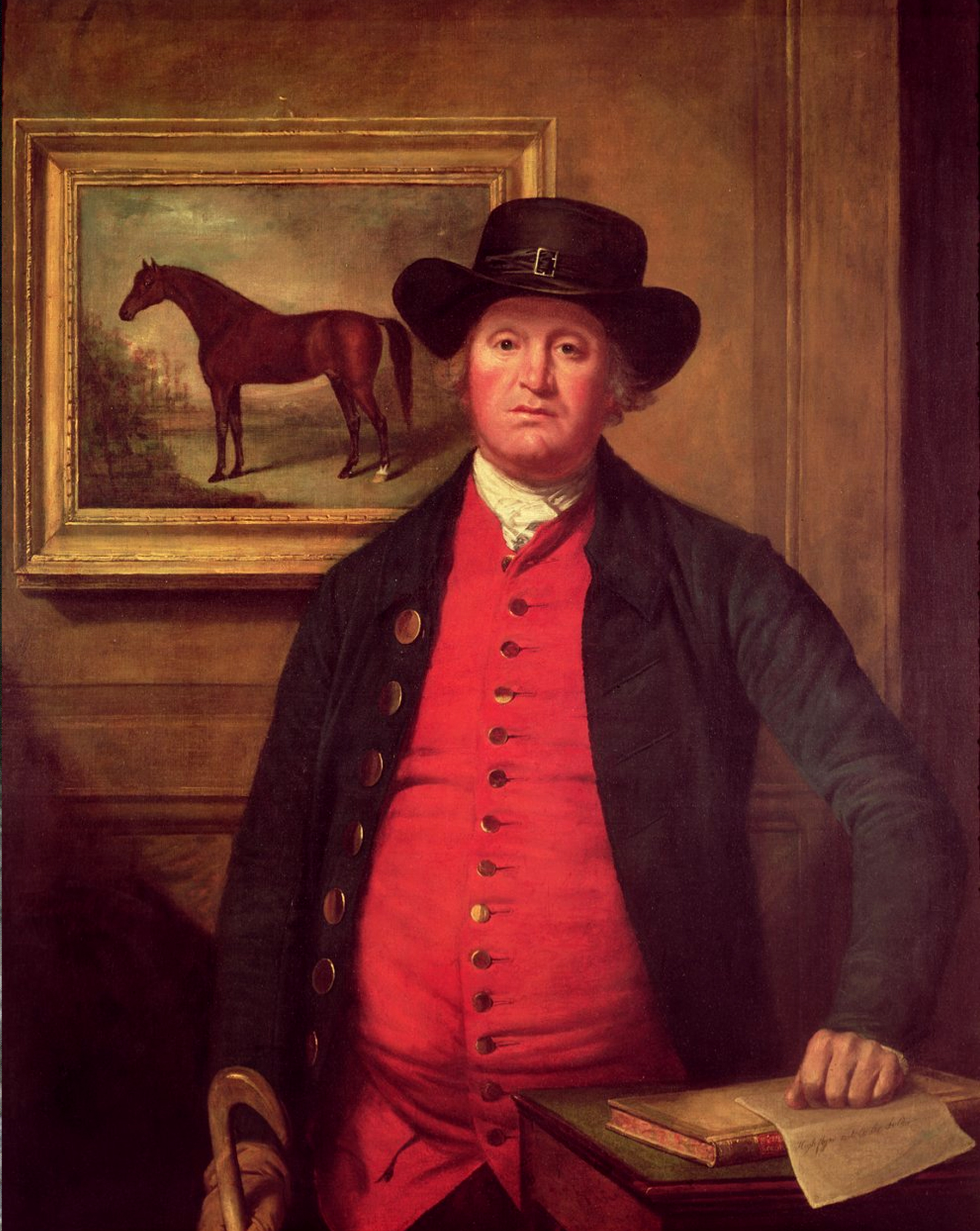 Tattersall was eager to make a name for himself. He had paid his dues as stud groom to the betting-mad, bigamous second Duke of Kingston-upon-Hull, and had laid by a substantial sum of money with which to make an impact on Georgian society.
Tattersall was eager to make a name for himself. He had paid his dues as stud groom to the betting-mad, bigamous second Duke of Kingston-upon-Hull, and had laid by a substantial sum of money with which to make an impact on Georgian society.
In 1766 this enterprising entrepreneur leased premises near what is now the asphalt sprawl of Hyde Park Corner, not far from Buckingham Palace, and set himself up as an auctioneer of horses.
History does not remember the name of Lot 1, but when Tattersall took the final bid and muttered the word ‘sold’ he had begun something that, 258 years later, has grown into the pre-eminent Thoroughbred auction house in Britain and, arguably, the world.
Tattersall had made a name not just for himself, but for all time.
The Dictionary of National Biography remarks of Tattersall that ‘his straightforward honesty and businesslike precision won him golden opinions’, and his unorthodox business model certainly won him a notable clientele.
He was renowned for paying vendors their price before the buyers had paid him, an assurance that had the obvious outcome – in those uncertain, turbulent times – of every vendor wanting their horses sold by Tattersall.
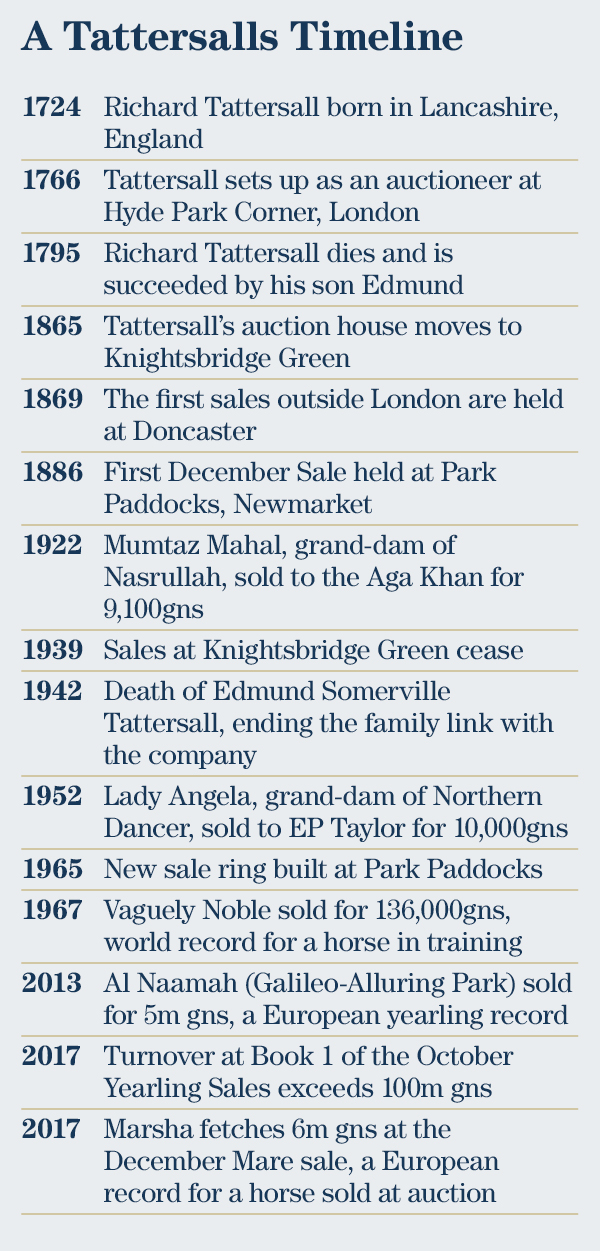
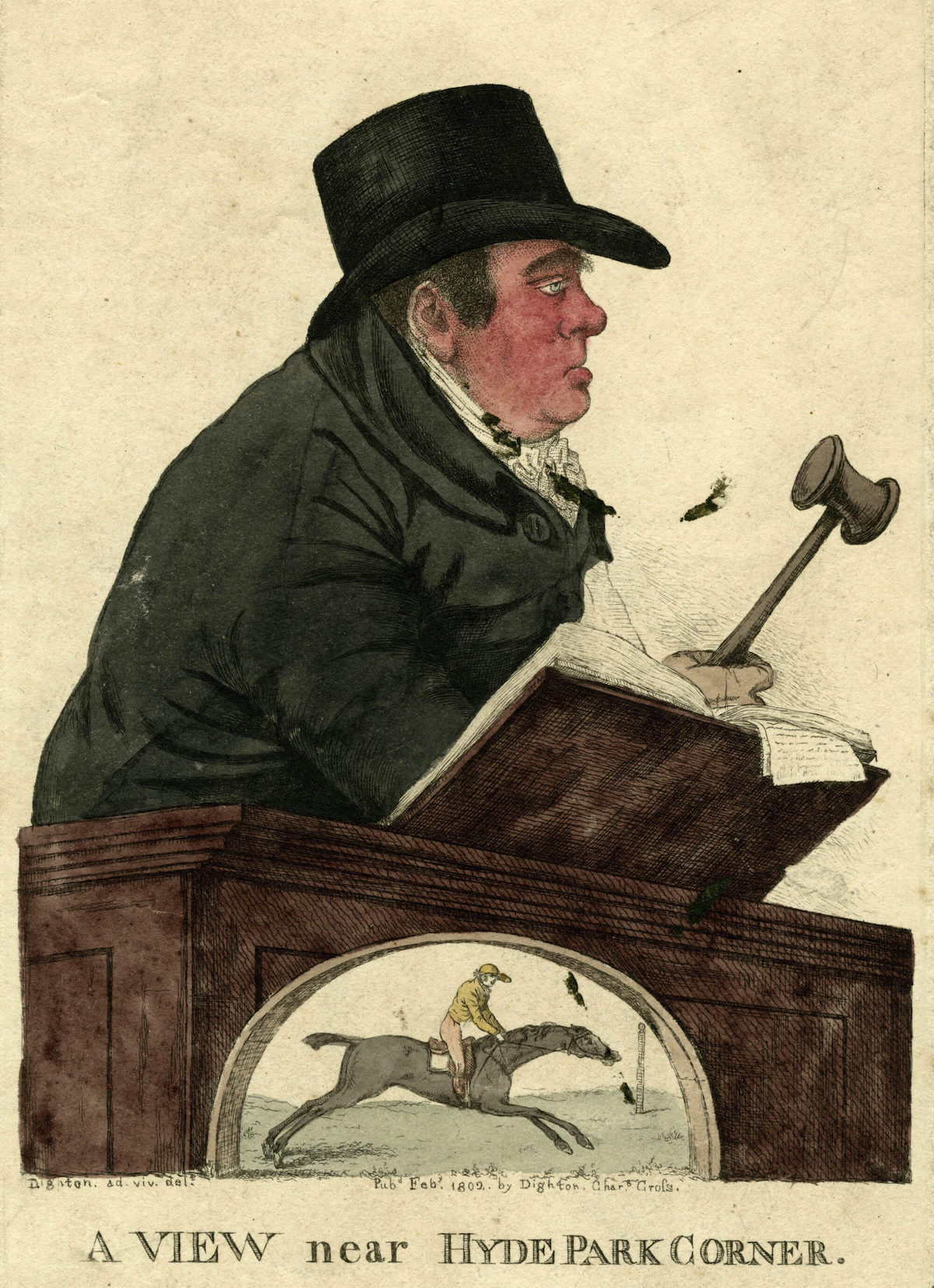 That price was paid in golden guineas, the defunct British coinage – minting ceased in 1814 – that constituted 21 old shillings, or one pound and an extra shilling, which was used to make it simple for auction houses to deduct their commission by taking that extra shilling.
That price was paid in golden guineas, the defunct British coinage – minting ceased in 1814 – that constituted 21 old shillings, or one pound and an extra shilling, which was used to make it simple for auction houses to deduct their commission by taking that extra shilling.
Nuances of history
Guineas now exist only in the abstract, kept alive by Tattersalls and their ilk, every horse sold a nod to the nuances of history.
Tattersall’s reputation soon soared, and remained stratospheric. The DNB notes that ‘he was free of the road, as no highwayman would molest him, and even a pickpocket returned his handkerchief, with compliments’.
Such courtesies may no longer apply – pickpockets don’t bother much with hankies these days, let alone compliments – but the genial and popular Edmond Mahony, chairman of Tattersalls since 1993, is a worthy keeper of the reputational flame at the world’s oldest bloodstock auction house.
“It doesn’t seem possible, does it, 250-odd years,” says Mahony, feeling warily for his handkerchief. “Clearly there were auctioneers in every town, but he was the only one who paid the vendors whether the buyers paid him or not.
“It’s a strange business model, but we stand by it. In an age of constant change, the old ways are still working in this respect at least.”
Tangible link
And not just the old ways. On the campus of Park Paddocks, the lavish Tattersalls sales complex in the heart of Newmarket, close to the town’s primitive railway station, there is an even more tangible link to the origins of the company.
“Over there is the rostrum that Richard Tattersall used at Hyde Park Corner, the original Georgian rotunda where he stood to conduct the auctions, with the bust of the Prince Regent [later King George IV] on top,” says Mahony.
“When the 99-year lease ran out at Hyde Park Corner the sales moved just down the road to Knightsbridge Green, opposite where Harrods is now. The Luftwaffe bombers luckily missed the rostrum, as well as the old clock, and when Park Paddocks was renovated in 1965 they were moved here.
“Six generations of the Tattersall family sold horses from that rostrum. I’m the ninth chairman of the firm and all but two have been called Richard or Edmund, or Edmond. Would-be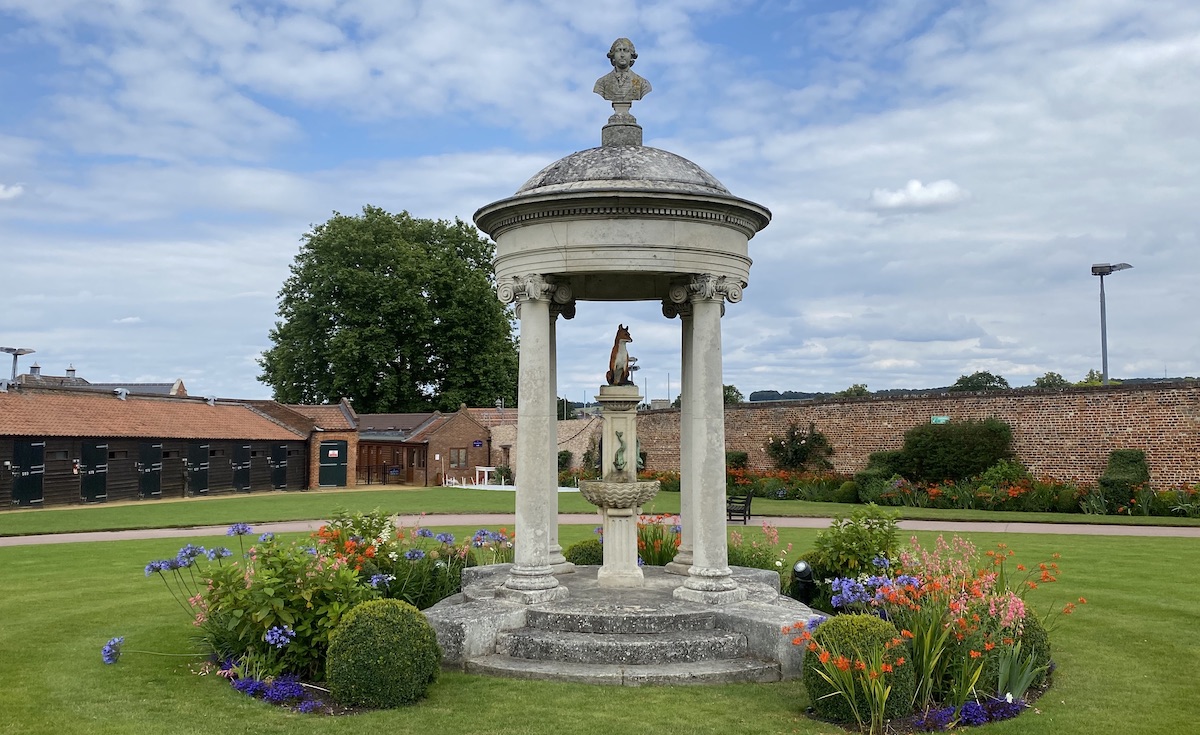 chairmen should note it’s not a mandatory requirement.”
chairmen should note it’s not a mandatory requirement.”
Richard Tattersall – known as ‘Old Tatt’ to distinguish him from several subsequent Richard Tattersalls – fathered a bloodline as potent and durable as that of any horse he sold.
He died in 1795, whereupon his son Edmund assumed control, followed by his grandson Richard and then a skein of successive Richards and Edmunds.
In 1942, on the death of Edmund Somerville Tattersall, the family connection was lost but the brand sustained, although it was not always smooth sailing on the sea of life.
International sport
“Peaks and troughs,” says Mahony. “The war years were the worst. When Kenneth Watt took over [succeeding the final Tattersall] the company was in a fairly sorry state, but over the years – especially when the Arabs became involved – racing became less of a gentleman’s club and much more of an international sport.
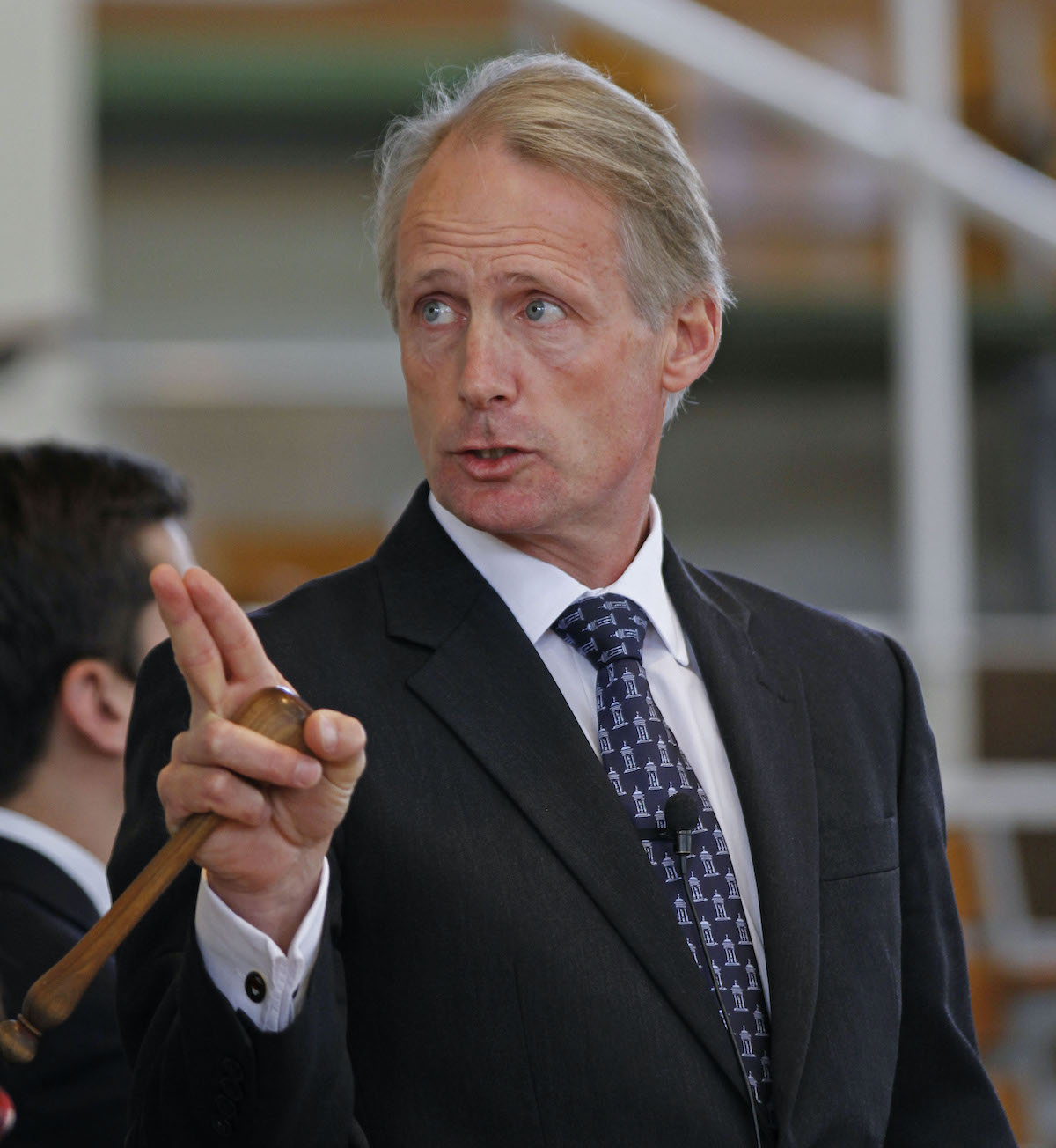 “By then Tattersalls had become centralised in Newmarket, making the town even more of a hub for racing.”
“By then Tattersalls had become centralised in Newmarket, making the town even more of a hub for racing.”
Newmarket is the heart of racing in Britain and Tattersalls is the artery through which new blood flows each year. Its importance in the racing world in turn enhances the importance of Britain on the global scene, with buyers from more than 40 countries attending and spending at the major sales each year.
Tattersalls also has a thriving site at Fairyhouse in Ireland, interests in sales houses in Australia and France, and a nascent online presence. ‘Old Tatt’ wouldn’t recognise the business now, but he would certainly appreciate the continuing influence and high profile of the brand he inaugurated.
The role of his present-day equivalent has also changed fundamentally. Mahony is not the type of chairman of the board who spends his time shuffling paper and hosting interminably dull meetings. “We don’t have a non-executive chairman,” he says, so his is a hands-on role, all the better to keep those plates spinning.
Mahony oversees all the divisions of the company – “Finance, marketing, property, Ireland, everything really,” he says, this hands-on man counting on his fingers and thumbs, almost running out of them.
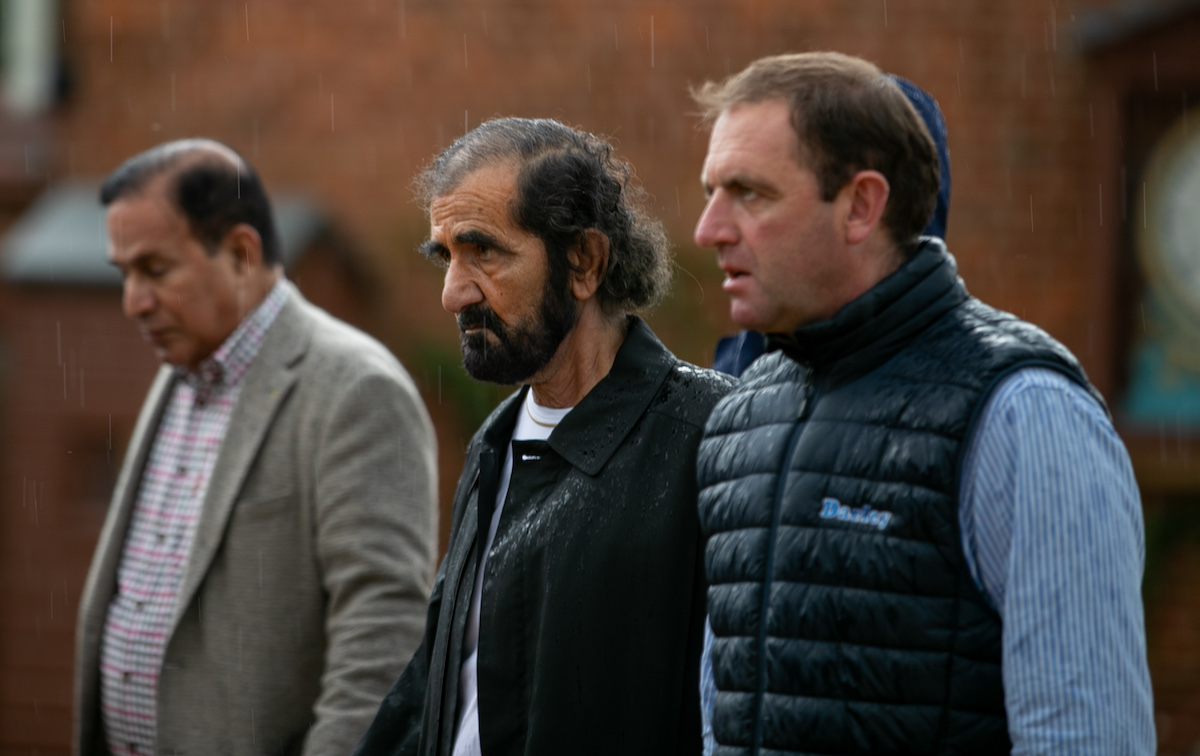 He spends some of the spring looking at horses for clients, is frequently overseas connecting with clients present and hopefully future, and he attends all the sales under the Tattersalls brand. He also puts in a shift on the rostrum, something else ‘Old Tatt’ would applaud.
He spends some of the spring looking at horses for clients, is frequently overseas connecting with clients present and hopefully future, and he attends all the sales under the Tattersalls brand. He also puts in a shift on the rostrum, something else ‘Old Tatt’ would applaud.
Contact with clients
“It’s not a prerequisite for the job, just as being called Richard or Edmund isn’t, but I began auctioneering when I was young and it keeps me in touch with the business, it’s a good way to maintain contact with clients,” he says.
There’s many a million-guinea yearling that has pricked its ears to the sound of Mahony’s gavel, but they aren’t the ones that necessarily stay in his mind. Ask him for his sales highlight and the usual question provokes an unusual answer.
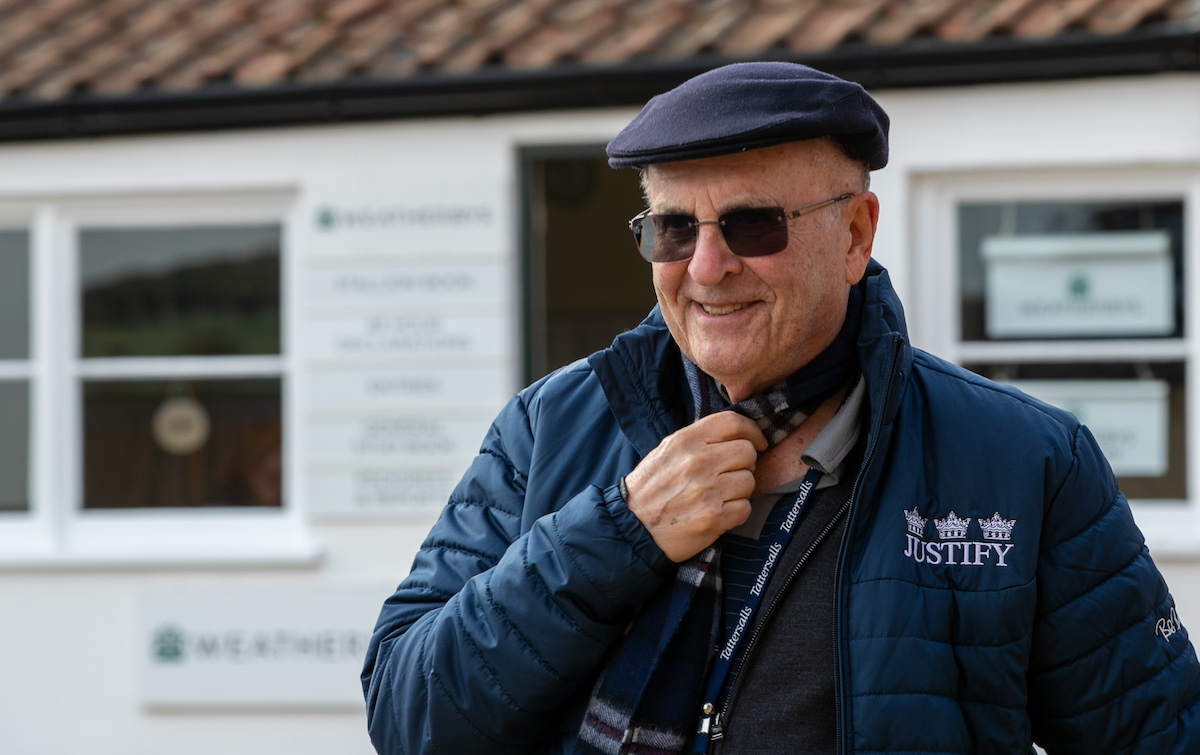 “When I was young, back in the 1980s, I was selling jump-bred foals at the old Ballsbridge sales in Dublin,” he says. “And the next lot was this fluffy-looking foal owned by an old lady who had told me she really needed this sale, she was worried stiff the foal wouldn’t sell. No pressure, then.
“When I was young, back in the 1980s, I was selling jump-bred foals at the old Ballsbridge sales in Dublin,” he says. “And the next lot was this fluffy-looking foal owned by an old lady who had told me she really needed this sale, she was worried stiff the foal wouldn’t sell. No pressure, then.
“Anyway, no-one bit, no-one bid. The foal was walking around the ring and I was doing my best, but to no avail. Eventually a bid came out of somewhere, the foal was sold, I drew a huge sigh of relief, and walked down the steps from the rostrum.
“At the bottom of the steps was the old lady. She said ‘thank you so much, I’ve got something for you’, and she reached into her bag and gave me half a dozen eggs.
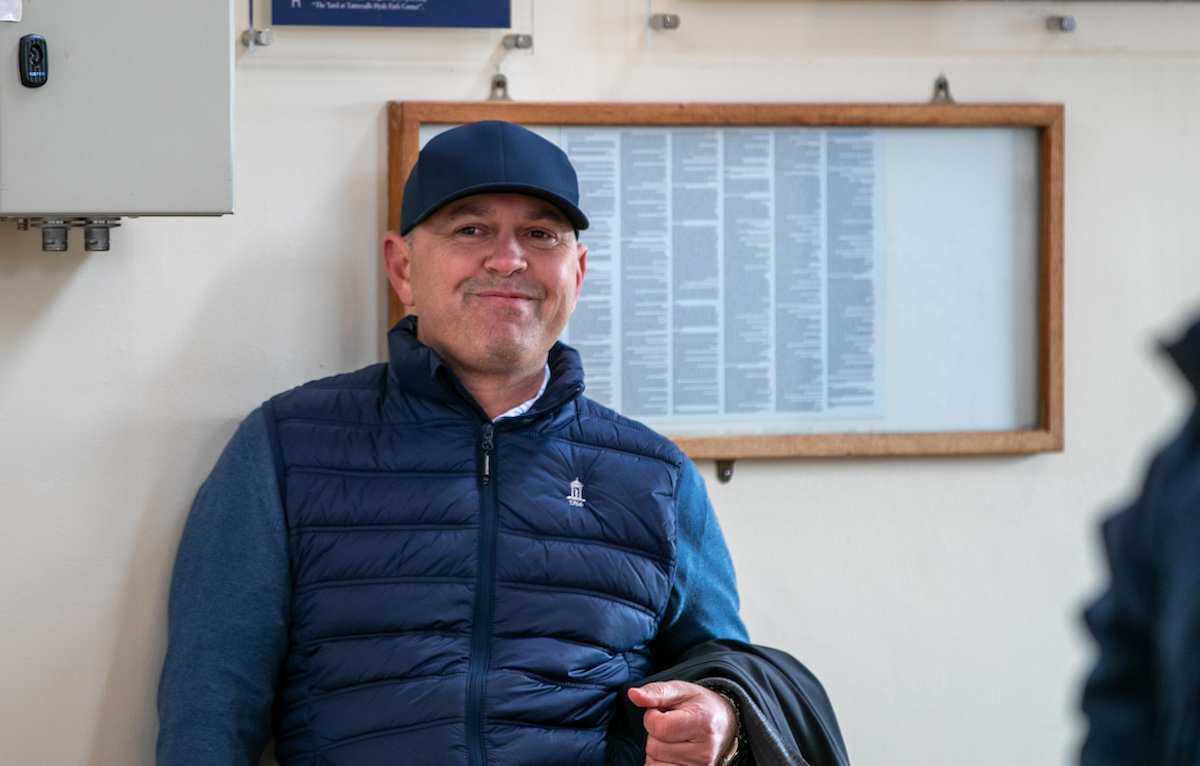 “I’ll never forget it. And it was a very welcome gift, because I was newly married at the time and money was scarce, and that evening we had a very nice omelette.”
“I’ll never forget it. And it was a very welcome gift, because I was newly married at the time and money was scarce, and that evening we had a very nice omelette.”
Change of priorities
Amid the laughter there’s a lesson thrown in, about how the business has altered in recent times. Which came first, the chicken or the egg, the vendor or the buyer? However you try to crack that one, it boils down to a change of priorities.
“There used to be a lot of small breeders, farmers, they’d get a mare and put her in foal and that was the business. It’s different today,” he says.
“The sales world previously concentrated on vendors, but the emphasis is now on buyers. They’re more than half the job now, they’ve become increasingly important.”
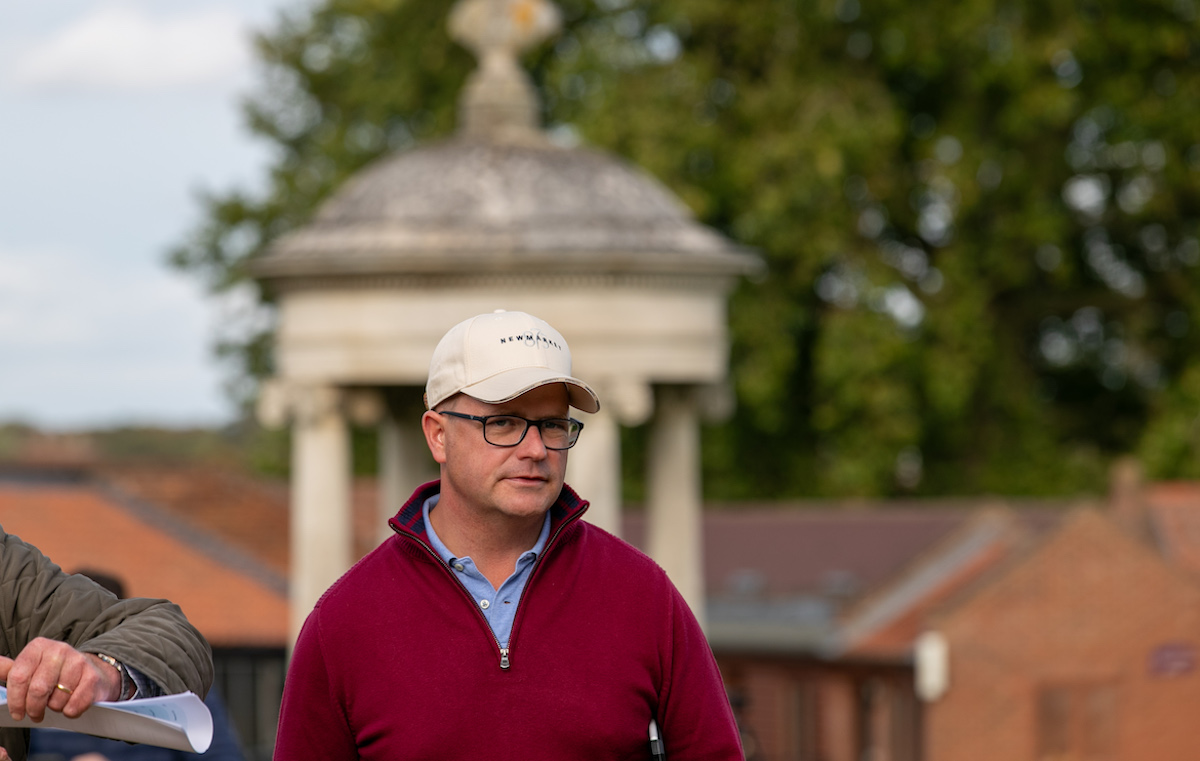 Mahony puts away the past, brings the future into focus, mutters darkly about the potential pitfalls to progress in the shape of a new government, affordability checks for bettors, industrial and residential developments that may encroach upon the hallowed ground of Newmarket and threaten its position as a training centre.
Mahony puts away the past, brings the future into focus, mutters darkly about the potential pitfalls to progress in the shape of a new government, affordability checks for bettors, industrial and residential developments that may encroach upon the hallowed ground of Newmarket and threaten its position as a training centre.
The future also holds a new chairman for Tattersalls as Mahony intends to stand down at the end of next year, bringing to a close a career devoted entirely to the business started by his pioneering predecessor at Hyde Park Corner, but the present is more pressing for all concerned given the imminence of the October Yearling Sales.
Jewel in the crown
It is the jewel in the crown, the gleaming centrepiece of the year at Park Paddocks. The three days of Book 1 [Oct 8-10] is where the bluest of the bloodlines go for sale with the apex predators of Coolmore and Godolphin leading the feeding frenzy, as they did in 2019 when the aura of drama was reminiscent of the mid-1980s and their era-defining, logic-defying duels at the Keeneland sales.
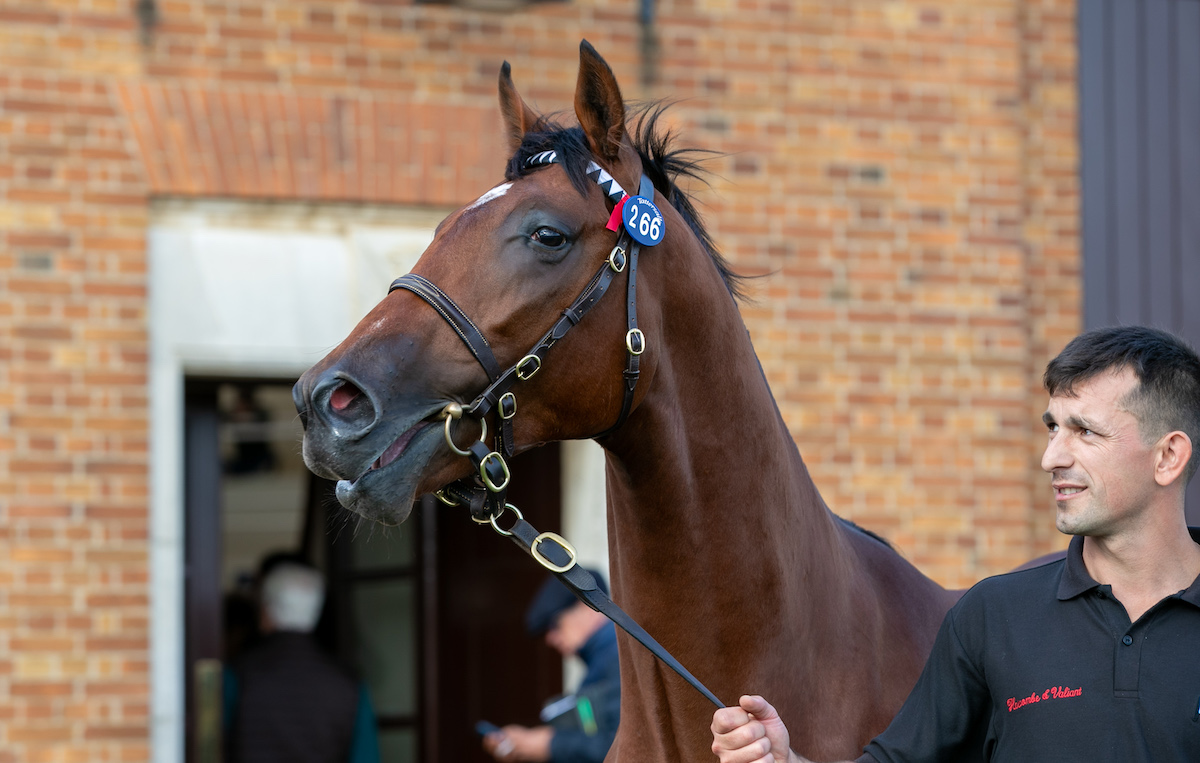 Sheikh Mohammed and the Magnier axis bought the top eight lots, with the former claiming the sale-topper at 3.6m guineas and others for 3.1m and 2.3m guineas, and the Irishmen signing for yearlings fetching 2.1m, 1.8m and 1.3m guineas.
Sheikh Mohammed and the Magnier axis bought the top eight lots, with the former claiming the sale-topper at 3.6m guineas and others for 3.1m and 2.3m guineas, and the Irishmen signing for yearlings fetching 2.1m, 1.8m and 1.3m guineas.
Such fireworks are emblematic of Book 1 and well Mahony knows what that represents for Tattersalls in particular and the racing world in general.
“Book 1 is the most important yearling sale in Europe, one of the most important in the world,” he says. “It’s our flagship sale, and this year’s catalogue is, as usual, a very good one.
“The standout might be the sister to Arc winner Alpinista, who has the pedigree and the looks for sure. There’s also a sister to champion European three-year-old St Mark’s Basilica, she’ll be one to watch too, along with plenty of desirable yearlings by the likes of Frankel, Dubawi, Kingman. It’s sure to be special.”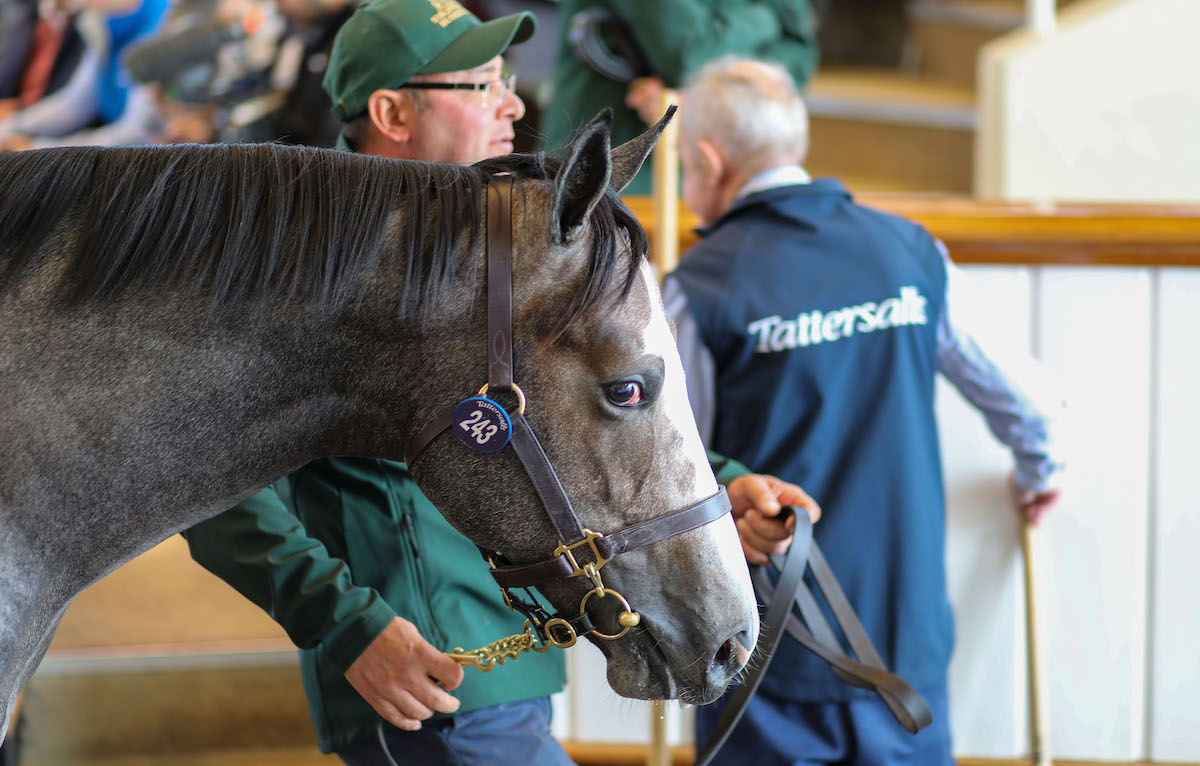
Buying dreams
It’s where records are set by those buying dreams made of baby racehorses. In 1829, Tattersalls sold the unraced two-year-old and future Derby winner Priam for 1,000gns, thought to be the first four-figure sum paid for an untried horse.
Eight years later, the first four-figure yearling went through the ring. Prices have risen somewhat since then, with Tattersalls invariably setting the European trend.
In 1896, Meddler fetched a world-record 14,500gns; in 1967 the world record for a horse in training was set by a 136,000gns bid for future Prix de l’Arc de Triomphe winner Vaguely Noble.
The European seven-figure Rubicon was first crossed at Tattersalls in 1983 for three yearlings barely anyone has heard of since, Trojan Prince, Convention and Hero Worship; caveat emptor, as the Romans used to say.
Notwithstanding that, buyers will be throwing caution wildly to the wind as usual, searching for the next champion to bear the label ‘sold by Tattersalls’. This year Lot 1 is a son of Sea The Stars, and after the final bid is taken, when the gavel comes down, the sound it makes will be the same sound it made a long, long time ago, echoing down the ages, the old familiar song of this sale of the centuries.
• Visit the Tattersalls website
Searching for a superstar? You just might find one at Ireland’s premier yearling sales …
View the latest TRC Global Rankings for horses / jockeys / trainers / sires


